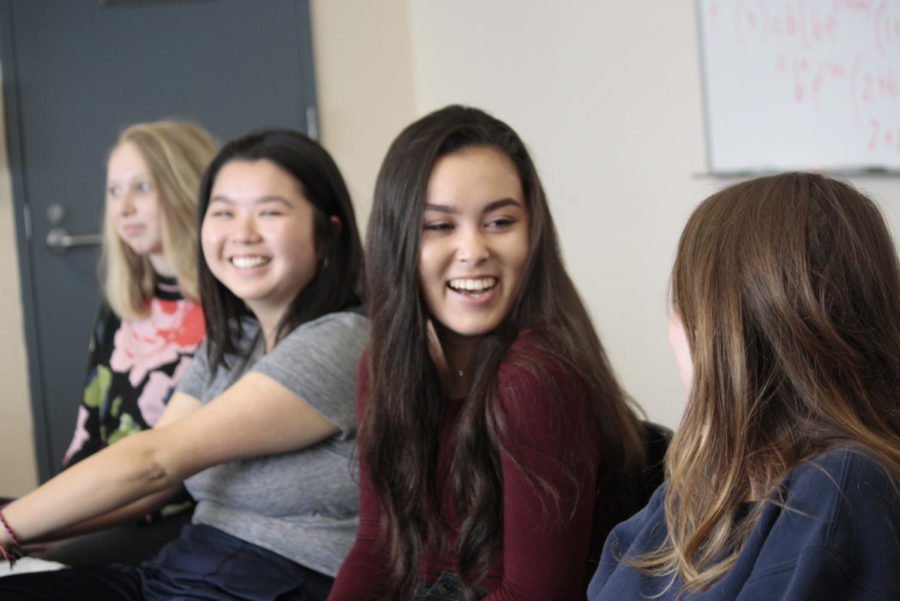Students and teachers react to new Being at Urban classes
Sitting up on pillows and lying down on blankets, Urban School students focus on their breath while directing positive thoughts at people they love in a practice called “heartfulness.” This is a Being at Urban class, which Urban School sophomores and juniors are now required to take for one trimester during the new U1 periods which were introduced this fall. These classes teach students emotional practices such as mindfulness and somatic therapy (a therapy that “focuses on gestures, bodily tension, and particular sensations through mindful awareness, movement, or touch”, according to the Well Clinic’s website), to help students deal with the stresses of Urban.
School Counselor Kaern Kreyling said that Being at Urban classes have “come out of the desire for years of having some kind of psychology class at Urban.” While U-period classes are much more casual than normal-period classes, Kreyling said that it was important to create a psychology-oriented space outside of one-to-one counseling and lunchtime forums. “[Students have said that] I’m so anxious all the time, can’t some adult in my life give me some resource. Do I have to go through my days like this?” said Kreyling.
This term, four Being at Urban classes are offered: yoga, mindfulness, relaxation, and somatic therapy. These classes “introduce how to go inside [yourself] in a very general way, since you spend so much of your day going outside,” said Joanna Sullivan, who teaches the mindfulness-centered Being at Urban class.
In contrast to talk therapy, which focuses on processing feelings, Kreyling said that it was important to “actually giv[e] people exposure to practices,” and that “there are all kinds of things going on that provide practical resource for people with their emotions, with their relationships, with their day-to-day inner lives.” As a general rule for Being at Urban classes, she said: “no processing, no homework, no proselytising [trying to convert people to a cause].”
There are students “that get the material and enjoy the material, [as well as] all the way to… ones that reject it and don’t enjoy it. I think all of it, the whole spectrum, is great,” said Sullivan. “It can be really useful for some, it can be a game-changer for some, and for others it can just be another throw-away class. Or throw-away tool,” she said.
Leo Kim (‘20) says that his relaxation class has been helpful. “We’ve just had time to relax and sleep, so it’s made me better-rested throughout the day,” he said.
However, Chiara Whitehurst (‘20) who is in the yoga Being at Urban class, says that her class isn’t what she expected. “It was marketed to me as ‘tips and tricks for stress and dealing with the workload at Urban,’” she said, but “yoga isn’t tips and tricks for dealing with stress and anxiety.”
Whitehurst continued, “the entire time, I’m just thinking about ‘I could be doing homework for this hour or so that I’m here.’ So, it just feels like a wasted block of time.” When asked what changes she would make to the program, she said that “I would do more studying tricks, how to get your homework done more efficiently.”
Gus McAllister (‘19), who is taking the somatic therapy class, echoed this sentiment. “I think giving academic stress relief tips would be better… I feel like my stress is more academic-related, so it would be nice to focus on that more,” he said.
Kreyling also wants to take the classes in a more practical direction: in the future, students will be able to choose a class they are interested in from a broad variety of psychology topics like psychology of sound, tarot, and energy system meditation.
Sullivan is hopeful for the future of Being at Urban classes. “We’re just beginning,” she said, “sometimes you just have to jump into things, and see what works and what doesn’t and then just adjust and adapt accordingly.”


